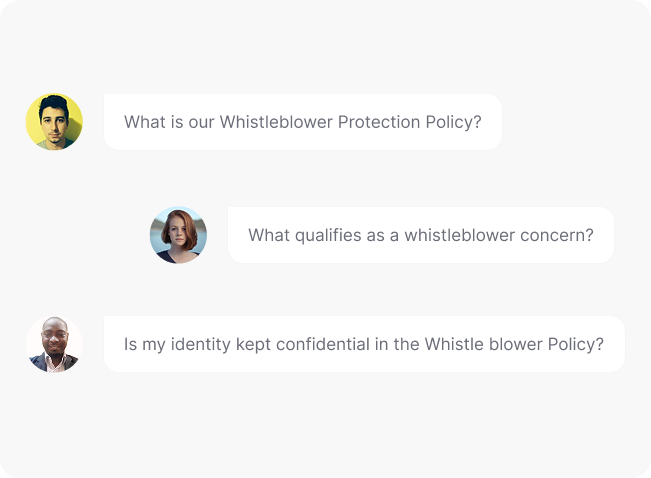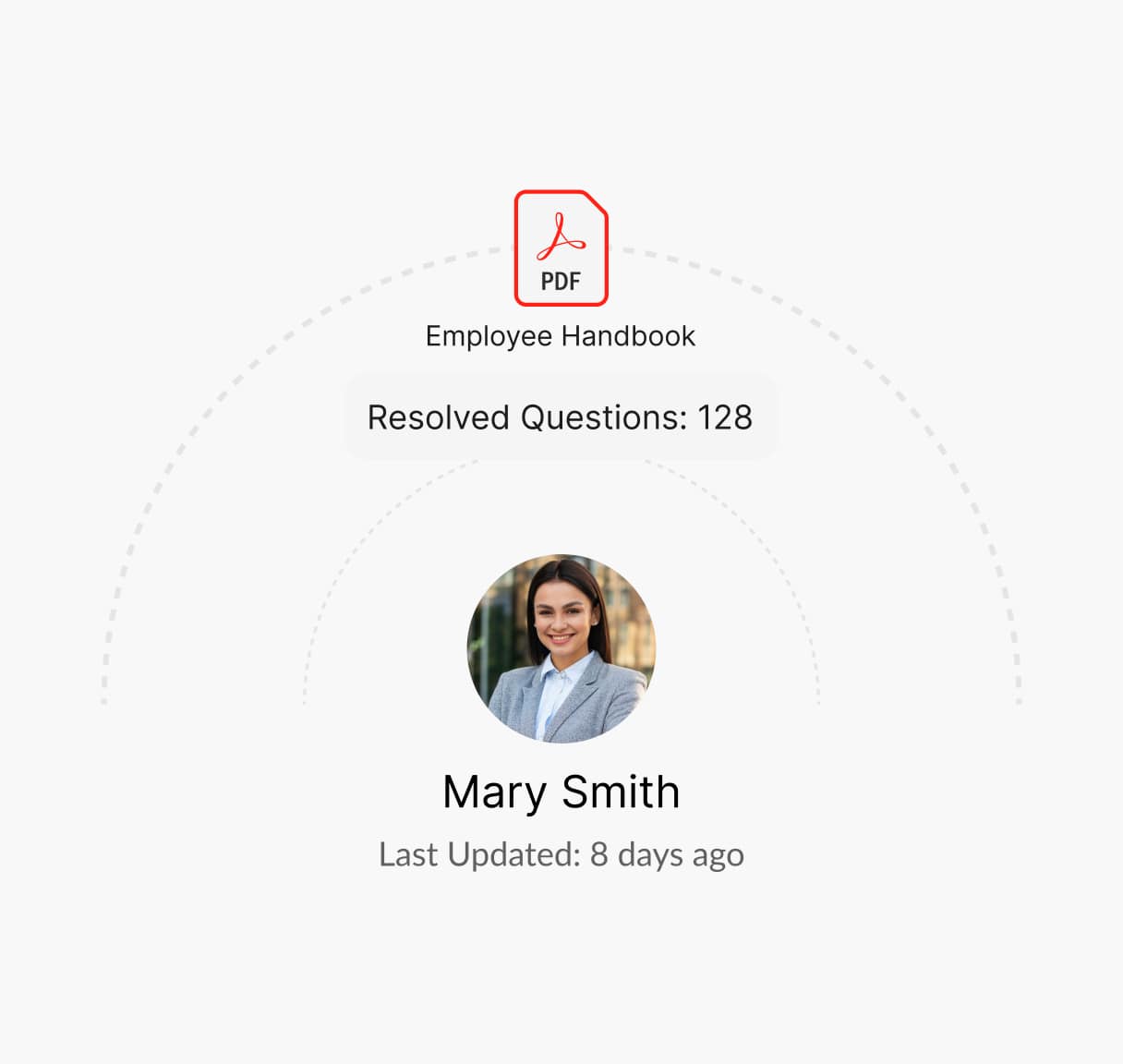Everything You Need to Know About Whistleblower Protection Policy
A whistleblower protection policy is a vital tool for fostering a culture of transparency, accountability, and ethical behavior within an organization. It ensures employees feel safe reporting misconduct, fraud, or illegal activities without fear of retaliation. By establishing clear protections and procedures, a well-designed whistleblower policy promotes trust and compliance while mitigating legal and reputational risks for the organization.

What is a Whistleblower Protection Policy?
A whistleblower protection policy outlines the rights, responsibilities, and safeguards for employees who report unethical or illegal activities within an organization. It specifies the types of misconduct that should be reported, the procedures for reporting, and the measures taken to protect whistleblowers from retaliation. This policy ensures compliance with laws such as the Sarbanes-Oxley Act, the Whistleblower Protection Act, and other relevant federal or state regulations.
Guidelines for Creating a Whistleblower Protection Policy
To create a comprehensive and effective whistleblower protection policy, it’s essential to establish guidelines that encourage reporting, ensure confidentiality, and protect whistleblowers from adverse actions. Here’s how to develop a policy that meets the needs of your team and organization:
Define the Scope
Specify misconduct types like fraud, corruption, harassment, and safety violations. Include definitions and examples for clarity.
Ensure Legal Compliance
Adhere to laws like the Sarbanes-Oxley Act and Dodd-Frank Act. Protect whistleblowers from retaliation, such as demotions or dismissals.
Establish Reporting Procedures
Provide clear reporting instructions and channels like hotlines or email. Offer anonymous options.
Protect Whistleblowers
Commit to safeguarding identities and take actions against retaliation.
Investigation Process
Outline steps for impartial, confidential investigations with defined timelines.
Promote Awareness
Educate employees on their rights and train managers to handle reports appropriately.
What is Covered in a Whistleblower Protection Policy?
An effective Whistleblower Protection Policy should include the following
Reporting Mechanisms
Clearly outline how employees can report misconduct, including available channels such as anonymous hotlines, online portals, or direct contact with compliance officers.
Types of Misconduct
Define what constitutes reportable activities, such as fraud, harassment, legal violations, safety concerns, or unethical behavior.
Protections for Whistleblowers
Detail measures to protect whistleblowers, including safeguards against retaliation like termination, demotion, or harassment.
Confidentiality Assurances
Specify how the organization will protect the identity of whistleblowers and the limited circumstances under which confidentiality might be waived.
Investigation Process
Describe the steps for conducting impartial investigations, including assigning responsibilities, maintaining timelines, and taking corrective action.
Employee Rights
Include information on legal protections under federal or state whistleblower laws and clarify that good-faith reporting is protected.
Policy Enforcement
Explain how violations of the whistleblower policy, such as retaliation or malicious reporting, will be handled.
Limitations to Protections
Outline scenarios where whistleblower protections may not apply, such as malicious or knowingly false reporting.
Relief and Penalties
Specify the remedies available for whistleblowers facing retaliation, as well as the penalties for individuals found guilty of misconduct or retaliatory actions.
Need help creating a Whistleblower Protection Policy?
How Winslow Helps HR Teams Streamline Whistleblower Protection Policies
Managing a whistleblower protection policy effectively requires clear communication, consistent enforcement, and robust reporting mechanisms. Winslow simplifies this process with the following features:

Instant answers anytime
Winslow enables employees to instantly access the whistleblower protection policy via Slack, Teams, or email. They can get clarity on reporting procedures, confidentiality measures, and their rights, reducing confusion and ensuring compliance.
Personalized Support
Winslow instantly answers HR questions, including those about your Whistleblower Protection Policy, ensuring clarity on reporting and protections.


Analytics and Insights
Winslow tracks policy-related queries, helping HR teams identify trends and common concerns. This data enables organizations to refine their policy, improve reporting channels, and address recurring issues proactively.
Streamline Whistleblower Protection with Winslow
Winslow empowers HR teams to manage whistleblower policies efficiently, reducing time spent on repetitive queries and ensuring employees feel supported and protected. Enhance compliance, transparency, and trust with Winslow’s AI-powered solutions.
Frequently asked questions
Have further questions about Winslow, contact us at sales@usewinslow.com
What protections do whistleblowers have against retaliation?
Protections include safeguarding against termination, demotion, harassment, pay cuts, exclusion from projects, or any adverse actions taken as a result of reporting misconduct.
What qualifies as a whistleblower complaint?
A whistleblower complaint involves reporting unethical, illegal, or fraudulent activities within an organization. This may include violations of laws or regulations, fraud, corruption, safety violations, harassment, or other misconduct that could harm employees, stakeholders, or the public. The report must typically be made in good faith and relate to activities that fall within the organization’s scope of accountability.
What are the 4 conditions for whistleblowing?
The 4 conditions that typically qualify for whistleblowing include:
- Illegal Activity: The issue involves a violation of law or regulation, such as fraud or corruption.
- Substantial Misconduct: The behavior significantly impacts safety, ethical standards, or public interest.
- Good Faith Reporting: The whistleblower has reasonable belief that the reported activity is unethical or illegal.
- Internal or External Reporting: The misconduct is reported to an internal authority (e.g., compliance officer) or an external body (e.g., government regulator) authorized to handle such cases.
What proof do you need as a whistleblower?
While concrete evidence is not always required to file a complaint, whistleblowers are encouraged to provide as much supporting information as possible, such as:
- Detailed descriptions of the misconduct.
- Dates, times, and locations of the incidents.
- Names of individuals involved.
- Relevant documents, emails, or other records.
The organization’s investigation team will evaluate the claims and seek corroborating evidence.
What is not considered whistleblowing?
Not all complaints qualify as whistleblowing. Examples of what is not considered whistleblowing include:
- Personal Grievances: Issues like workplace disputes, interpersonal conflicts, or dissatisfaction with job conditions that don’t involve broader ethical or legal concerns.
- Knowingly False Reports: Claims made with malicious intent or without a reasonable belief in their validity.
- Non-Work-Related Issues: Complaints about matters outside the organization’s jurisdiction or unrelated to its operations.
- Policy Disagreements: Disapproval of company policies or practices that are legal and compliant.
Additional resources
Device Usage Policy
Managing employee leave effectively is vital for maintaining workforce productivity and compliance....
Learn moreconfidentiality policy
Protecting sensitive information is crucial. A clear Confidentiality Policy outlines guidelines for...
Learn moreclaim reimbursement
Ensuring fair compensation for expenses is key. A clear Claim Reimbursement Policy...
Learn more




